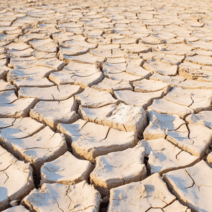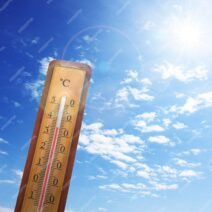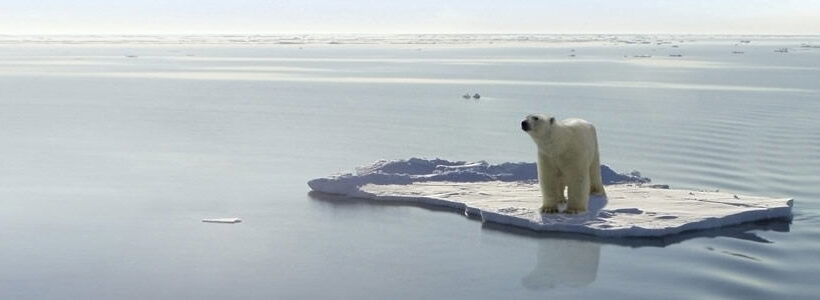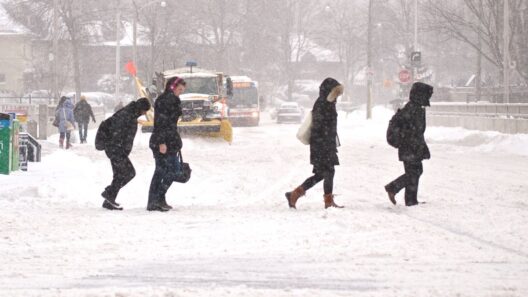Global warming, a term that evokes images of sun-drenched landscapes and rising sea levels, may paradoxically lead to an entirely different phenomenon: global cooling. This juxtaposition may appear disconcerting, yet upon closer examination, the interplay between rising temperatures and colder climatic episodes reveals a complex tapestry woven from the threads of environmental science, oceanic currents, and atmospheric dynamics. Understanding these connections is essential for grasping the intricacies of our evolving climate.
To untangle this climate conundrum, we must first acknowledge the role of greenhouse gases in warming our planet. The relentless accumulation of carbon dioxide (CO2), methane, and nitrous oxide in the atmosphere acts as a blanket, trapping heat and orchestrating an overarching trend toward higher global temperatures. However, this same warming can instigate destabilizing effects within Earth’s climatic systems, creating conditions ripe for unexpected cooling. But how does one phenomenon give rise to its apparent opposite?
Consider the Earth’s climate system as a vast orchestra, where each instrument represents different factors influencing weather patterns. The winds, ocean currents, and temperature fluctuations must harmonize to create a balanced symphony of climate. When global temperatures increase, one of the foremost responses is the melting of polar ice caps and glaciers. This influx of freshwater into the oceans can disrupt the delicate balance of ocean currents, akin to a pianist hitting a wrong note, leading to a discordant climatic response.
One key player in this intricate system is the Atlantic Meridional Overturning Circulation (AMOC), a critical component of oceanic currents. The AMOC transports warm water from the tropics to the North Atlantic, while cold water sinks and journeys southward. Should the influx of freshwater from melting ice be substantial enough, it could weaken this current, consequently slowing its flow. The repercussions of a languid AMOC are extensive and can result in cooler temperatures across Europe and North America, a stark contrast to the overall trend of global warming.
In 2015, a notable study illustrated the potential for such disruptive alterations. The research suggested that a slowdown of the AMOC could lead to notable shifts in weather patterns, including more extreme winters in parts of Europe and North America. This illustrates how the pulses of climate crises can lead to chaotic harmonies, producing frigid conditions where heat might otherwise reign supreme. Indeed, during the Little Ice Age, which spanned from the 14th to the 19th century, evidence indicates that disruptions in the AMOC were likely linked to this regional cooling.
Another intriguing aspect of global warming leading to localized cooling involves the phenomenon of volcanic eruptions. While these events are not directly connected to human-induced climate change, their effects can be significant. Volcanic eruptions release vast quantities of ash and sulfur dioxide into the atmosphere, which can reflect sunlight away from Earth and lead to temporary cooling effects. During the 1991 eruption of Mount Pinatubo in the Philippines, global temperatures dropped by an estimated 0.5°C for several years. As the planet’s climate continues to warm, the interaction between natural and anthropogenic forces creates a stage ripe for unexpected climatic transitions.
Moreover, oceanic feedback mechanisms play a crucial role in this duality. Warmer water temperatures result in enhanced evaporation, contributing to the formation of clouds. These clouds, particularly low-lying stratocumulus clouds, can have a cooling effect by reflecting sunlight away from Earth’s surface. This phenomenon, known as the negative feedback loop, serves as a testament to nature’s ability to self-regulate to a degree. However, if the clouds become too thick or extensive due to increased moisture in the atmosphere, they can also insulate the surface, trapping heat and exacerbating warming conditions.
Additionally, the interplay between land and ocean temperatures exhibits its own set of spectacular contradictions. Land heats more quickly than water, leading to increased warming over terrestrial areas. This differential heating can trigger shifts in atmospheric circulation patterns, considerably affecting weather systems. For instance, as land temperatures surge, they can induce more pronounced heatwaves, whilst simultaneously altering precipitation patterns that may lead to cooler conditions in specific geographic locales.
Weather stations at our fingertips offer a vivid representation of these fluctuations. Unusually harsh winters can be intricately linked to warming trends elsewhere, emphasizing that climate is not monolithic. The warming of Arctic regions, for example, is having profound ramifications on jet stream patterns. A meandering jet stream can result in lingering weather systems over certain areas, potentially leading to prolonged cold spells—a remarkable case of warming begetting icy conditions.
In summary, the relationship between global warming and potential global cooling is a labyrinth of environmental intricacies, orchestrating an enigmatic ballet between various climatic influences. Melting ice disrupts ocean currents, which in turn affects atmospheric dynamics, leading to localized cooling in seemingly paradoxical ways. The intricacies of this delicate balance call for a deeper understanding of our climate and the ramifications of our actions. As climate activists, scientists, and citizens grapple with these complexities, it becomes paramount that we acknowledge the multifaceted nature of climate phenomena. By doing so, we can better prepare for the future and embark on a path toward meaningful environmental stewardship.






